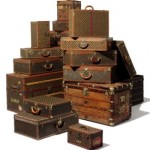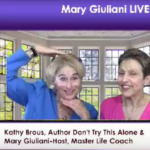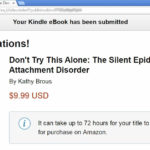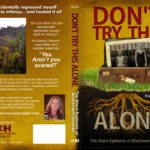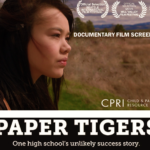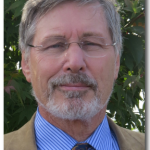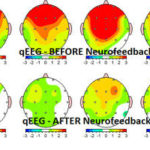 On February 28, 2018, I published a hair-raising book on my first six years facing crushing infant trauma, Don’t Try This Alone: The Silent Epidemic of Attachment Disorder, now at https://www.amazon.com/dp/1976120128
On February 28, 2018, I published a hair-raising book on my first six years facing crushing infant trauma, Don’t Try This Alone: The Silent Epidemic of Attachment Disorder, now at https://www.amazon.com/dp/1976120128
On April 11, 2018, I was singing for joy in public in Mexico! Yup, that’s me at left; click the photo for a better view. And here’s my first music video: https://www.youtube.com/watch?v=mpx6j89aPWw
Visiting Mazatlan that day, I heard Jose the Tenor singing in Plaza Machado, the town square. He was so musical, I just had to join him in a spontaneous riff on Verdi’s Rigoletto. I couldn’t help singing–and then we couldn’t help dancing. Who cares if “La donna è mobile” is for tenors? We nailed it!
Dr. Peter Levine was right in his 2005 book Healing Trauma: if we face the trauma squarely and walk through the pain, we can find such relief that it feels like “an experience of God.” [1]
I didn’t even know that I was sick until I was over 50. Whu Nhu? Then I discovered that I had un-diagnosed infant trauma, and I’d been living with half a brain since forever.
Music Heals to Our Core
It also turned out that the healing power of music is strong for trauma. In fact, my book describes how I used music to survive all my life.
I ran around at age four singing high scales to a Disney soundtrack and never knew it was Donizetti until I turned 30. As teen I holed up alone singing folk laments with my guitar or dancing for joy to the radio. Had this not be frowned upon, I might have made a career of it.
Instead I got a math degree and worked as an economist and with rocket scientists, but for the next 40 years I also sang operas and classical art songs in several languages for hours a week–for love, not money. I just physically couldn’t stop singing (and dancing) for decades.
The therapeutic power of music has a powerfully simple basis: human beings, like other life forms, are musical organisms. From conception, our first cell divisions occur in a rhythmic division by two, by two, and two again.
We are also not isolated but in a “duet,” in which our mother’s emotions, heartbeat, and other body rhythms are also encoded into our embryonic cells as rhythmic vibrations.
“The first music encoded deep within your memory are… the rhythms and tempos of your first cells,” writes neurophysiologist Galina Mindlin, MD. “As your cells began to develop with the comforting rhythms of your mother’s heartbeat and the whooshing sounds vibrating through her placenta and your umbilical cord, these first musical scores began entraining (two or more rhythms synchronizing into one) in your brain and orchestrating the essence of music for your entire being.” [2]
And we’re designed for this “duet” to continue, from birth to age three and beyond, because a baby’s brain requires it. We need a responsive two-way communication with an adult’s eyes and facial expressions for our brains to develop. Responsive, musical interactions with the mother cause an infant’s neurons to fire in neural circuits for affection, stimulating growth there and in the brain generally.
This pattern is so musical that neuroscientists and psychologists use the musical word “attunement” for the two-way infant-parent duet. It’s from the two English words “at” and “tune,” meaning “to bring into harmony.” See my blog on this here: https://attachmentdisorderhealing.com/allan-schore/
Or Not…
Or not. It turned out that I had a major deficit of this biologically-necessary positive musical duet experience from conception and after birth, resulting in developmental trauma and severe attachment disorder.
Instead of “comforting rhythms,” I was gestated in my mother’s anxiety and anger about an unwanted pregnancy. This led to an emergency caesarean and my immediate incubation for weeks, in an era before remediation when incubatees were routinely given phenobarbital to silence them. Then I was put in a back room to “cry it out” alone and raised by a stuffed cat.
I didn’t get that two-way duet. I didn’t get any musical anything for months or years after I was born.
So my entire body–which was still composed of rhythmically dividing cells– craved the musical experience. That craving was baked into my cells, but I didn’t get it, and I didn’t get it, and then finally one day:
Just imagine how wonderful it felt when I finally did get to hear and actually sing (and dance) real music!
Of course, music isn’t all it takes; we have to face the pain. But music sure helps.
My book and website show that some 50% of industrial nations’ populations have significant childhood trauma, often due to this lack of a positive musical experience in the womb and during early years. Half of us have child trauma, we’re not taught to look for it, and so we don’t get healing.
In fact, unaddressed childhood trauma is more likely to take 20 years off our lifespan. See the Appendix to my book at https://www.amazon.com/dp/1976120128
Music has gone far to provide this healing for me and for so many. Music should be much more widely used to treat trauma from childhood or at any time of life.
Footnotes
[1] Levine, PA. (2005, p.4, p.79-81). Healing Trauma.
[2] Mindlin G, et. al. (2012). Your Playlist Can Change Your Life.
Comments are encouraged, with the usual exceptions; rants, political speeches, off-color language, etc. are unlikely to post. Current software limits comments to 1030 characters (2 long paragraphs).
News blogs expand on my book Don’t Try This Alone: The Silent Epidemic of Attachment Disorder. Watch as my journey of recovery teaches me the hard way about Adult Attachment Disorder, Developmental Trauma, Attachment Theory, and the Adult Attachment Interview (AAI).
Copyright © 2018 by Kathy Brous. All right reserved. No portion of this website, except for brief reviews and live links to this website, may be copied or used in any form or manner whatsoever. All use must show prominent and clear attribution to Kathy Brous at https://attachmentdisorderhealing.com
Medical Disclaimer: This website is for general information purposes only. It is simply my own research. Individuals should always see their health care provider or licensed psychotherapist before doing anything which they believe to be suggested or indicated herein. Any application of the material on this website is at the reader’s discretion and is the reader’s sole responsibility.
![]()



